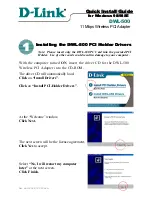
•
Mixing -
By default, input from I2S (Bluetooth) and J9 (analog) are mixed together within the
DSP before being sent for amplification. This allows for a smooth transition between aux
and Bluetooth without the user needing to touch the speaker/amplifier. This can be
reprogrammed via a custom SigmaStudio project. For example, you might use a switch to
change between Bluetooth and AUX (analog). See the example projects pack for an
example.
Speaker Output and Line Output
•
Speaker Output -
The KABD-250/230 speaker output (via J10) is stable down to 4ohm, which
means it can power almost any speaker. This also means it can power any impedance of
speaker greater than 4ohm, however the efficiency will go down as the impedance goes up.
Do not bridge J10, the KABD-250/230 is not intended to be bridged.
•
Line output
- The ADAU1701 DSP is capable of 4 channels of analog output with DSP
applied. 2 of these channels are connected to the amplifier chip (DAC0 and DAC1 in
SigmaStudio), and the extra 2 channels can be accessed as a line level output via J7 (DAC2,
DAC3 in SigmaStudio).
o
This port was designed to make it easily cascadable with similar amplifiers, but a
line output jack could be simply wired to J7 as well. The optional functional cable
pack comes with a 6 pin-6 pin JST cable, which could be cut in half and wired to a
3.5mm or RCA jacks
Quick Start Steps
1.
Speaker Connection
Connect speakers to J10 with the provided 4-wire
harness according to the wiring diagram or by
following the labels on the back side of the board. The
ends of included wiring harness comes pre-loaded
with solder to quickly connect to your driver / speaker.
Do not let wires touch while the amplifier is on. Attach
the wiring harness to your speakers before connecting
to your KABD.
The KABD is suitable for powering speakers and
drivers with impedances from
4 Ohms to 8 Ohms
.







































